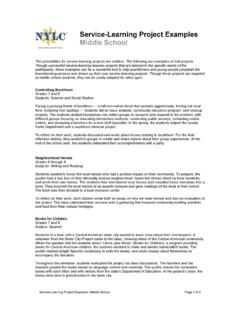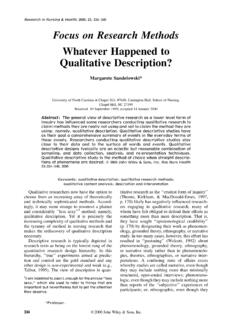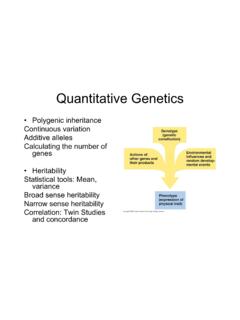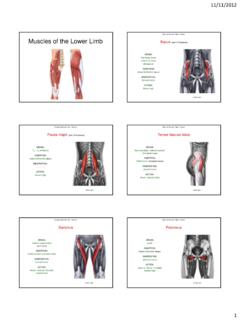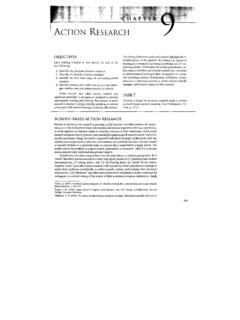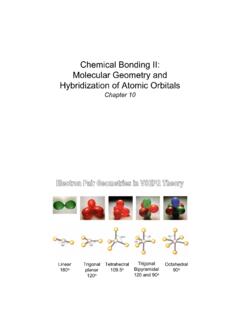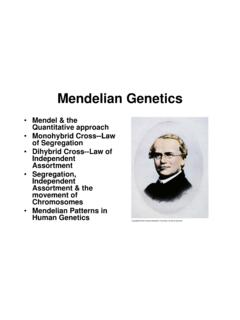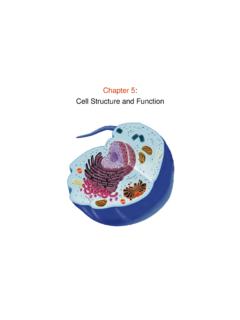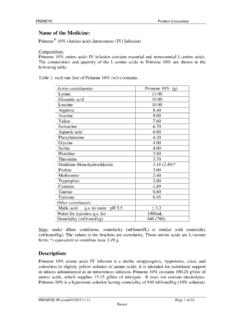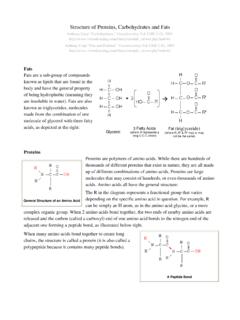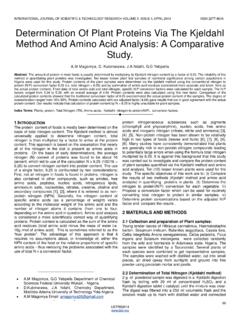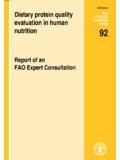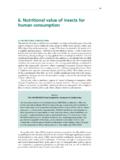Transcription of Amino Acid Catabolism - WOU Homepage
1 Amino acid Catabolism Dietary Proteins Turnover of protein Cellular protein Deamination Urea cycle Carbon skeletons of Amino acidsAmino acid Metabolism Metabolism of the 20 common Amino acids is considered from the origins and fates of their: (1) Nitrogen atoms (2) Carbon skeletons For mammals: Essential Amino acidsmust be obtained from dietNonessential Amino acids-can be synthesized AminoAcid Catabolism Amino acids from degraded proteins or from diet can be used for the biosynthesis of new proteins During starvation proteins are degraded to Amino acids to support glucose formation First step is often removal of the - Amino group Carbon chains are altered for entry into central pathways of carbon metabolismDietary Proteins Digested in intestine by peptidases transport of Amino acids active transport coupled with Na+ protein Turnover Proteins
2 Are continuously synthesized and degraded (turnover) (half-lives minutes to weeks) Lysosomal hydrolysis degrades some proteins Some proteins are targeted for degradation by a covalent attachment (through lysine residues) of ubiquitin(C terminus) Proteasomehydrolyzes ubiquitinated proteinsTurnover of protein Cellular protein Proteasomedegrades protein with Ubtags T 1/2 determined by Amino terminus residue stable: ala, pro, gly, met greater than 20h unstable: arg, lys, his, phe2-30 min Ubibiquitin Ubiquitinprotein, kD highly conserved in yeast/humans carboxyterminal attaches to -lysine Amino group Chains of 4 or more Ubmolecules target protein for destruction Degradation--Proteasome Proteasomedegrades protein with Ubtags 26s.
3 Two subunits, 20s (catalytic) and 19s (regulatory) Releases peptides 7-9 units longDeamination Collect NH3from tissues alaninefrom muscle glutamine from other tissues glutamate from liver TransaminationReactions Transfer of an Amino group from an -aminoacidto an -keto acid In Amino acid biosynthesis, the Amino group of glutamate is transferred to various -keto acids generating - Amino acids In Amino acid Catabolism , transamination reactions generate glutamate or aspartateTransamination cytosol of liver collect in glutamate glutamate transferred to mitochondriaMechanism Pyridoxalphosphate co-factor Schiff base Ping pong KetoacidSerine & Threoninedeamination Dehydratasereaction Remove H2O first Serine pyruvate Threonine -ketobutyrateOxidative deamination glutamate transferred to mitochondria Glutamate dehydrogenaseUrea cycle In Liver Glutamate dehydrogenase CPS I bicarbonate and ammonia react In mitochondria.
4 Reactions cytosolicreactions arginasereleases urea remove waste products tied to TCA cycleUrea cycle Mitochondria reactions Cytosolicreactions Mitochondrial Reactions CPS I Bicarbonate and ammonia react Orinithinetranscarbamolyse Citrullinetransported to cytosolCytosolicreactions Arginasereleases urea remove waste products: ammonia/bicarbonate tied to TCA cycle Urea cycle and TCA cycleGlucogenic vs ketogenic Amino acids Glucogenicamino acids can supply gluconeogenesis pathway via pyruvate or citric acid cycle intermediates Ketogenicamino acids can contribute to synthesis of fatty acids or ketone bodies Some Amino acids are both glucogenic and ketogenicCarbon skeletons of Amino acids glucogenic ketogenic Phenylalanine example Autosomalgenetic defect Phenylalanine Metabolic defect Genetic defect Recessive Hydroxylasedefect Minor pathway produce Phenylpyruvicaci

